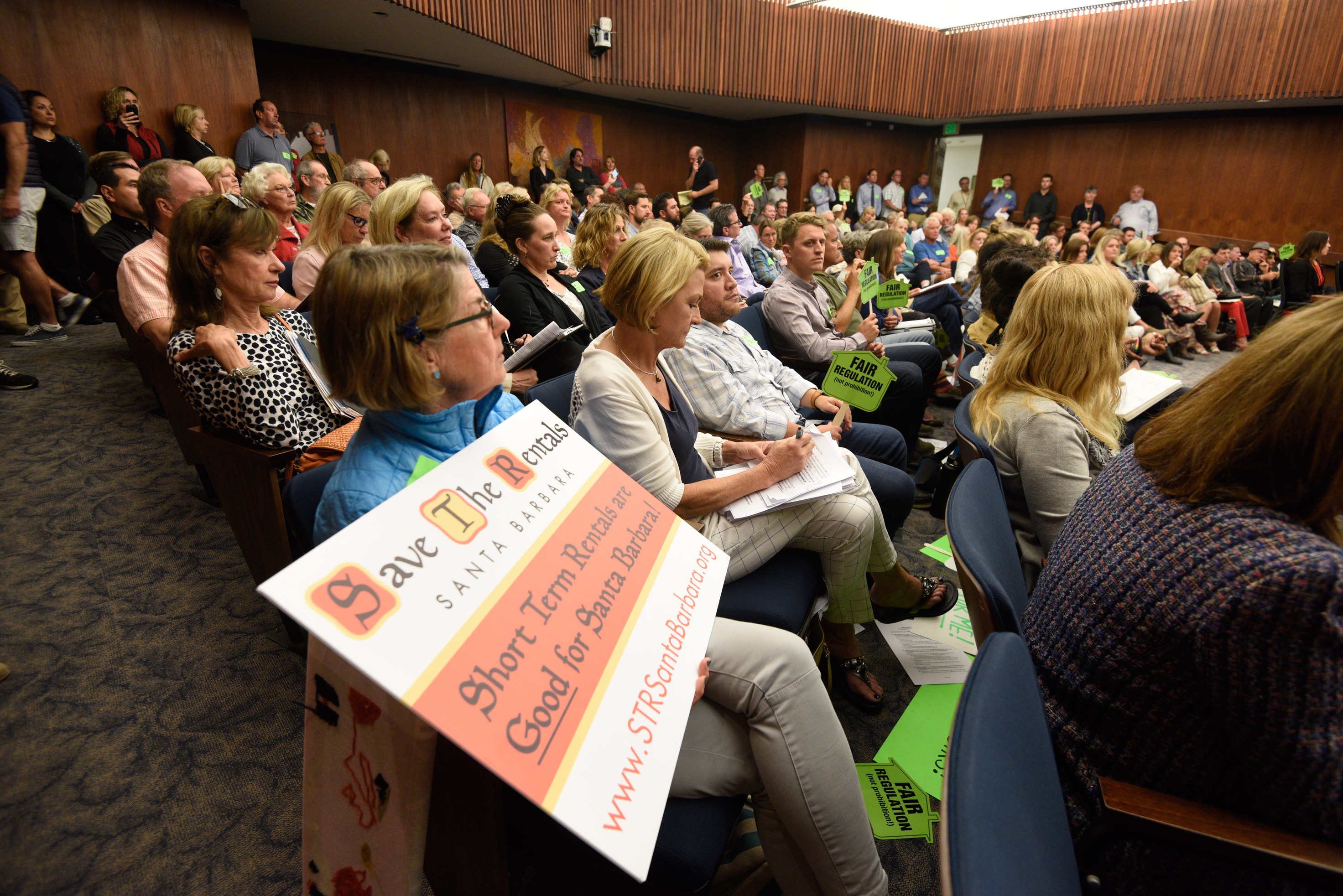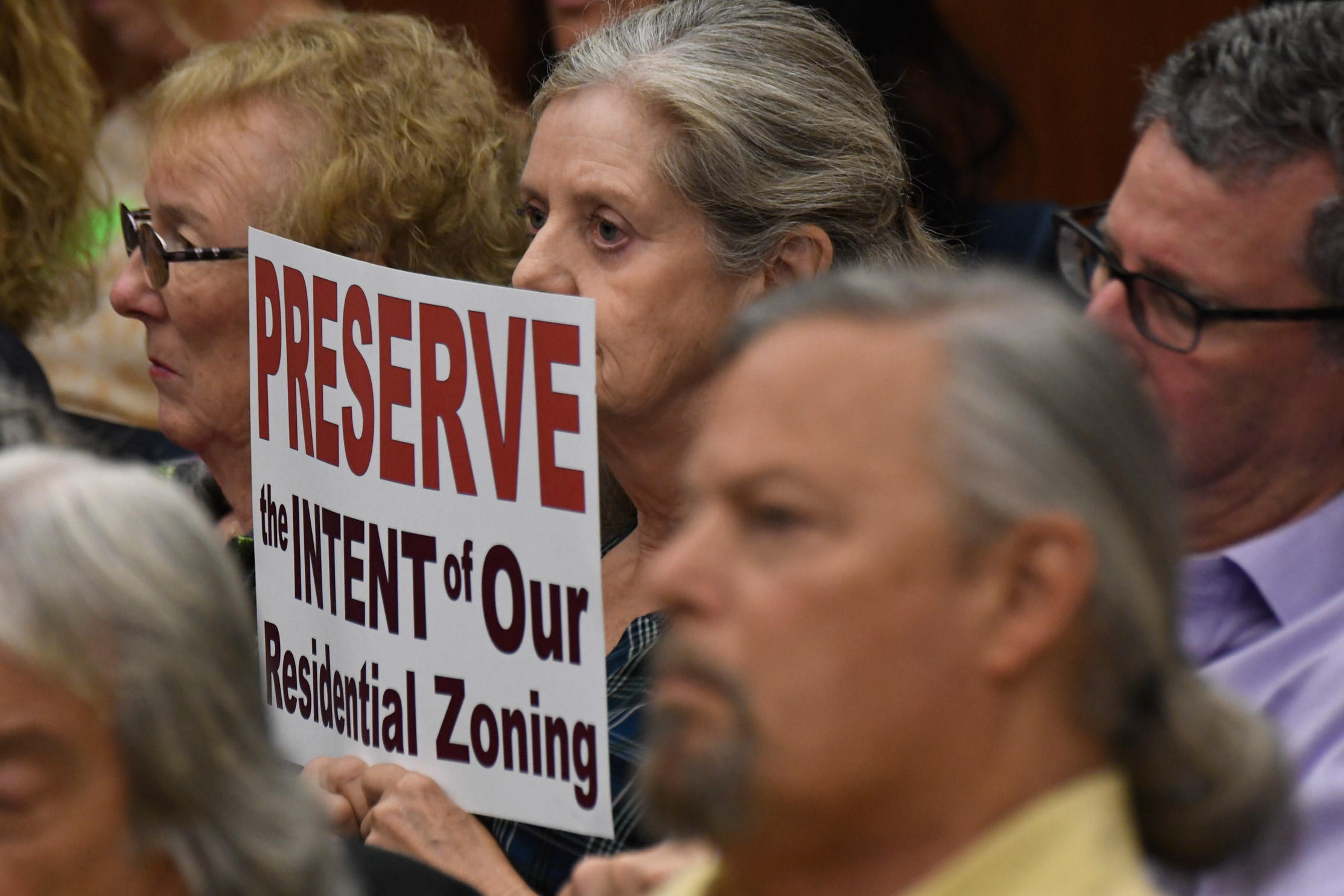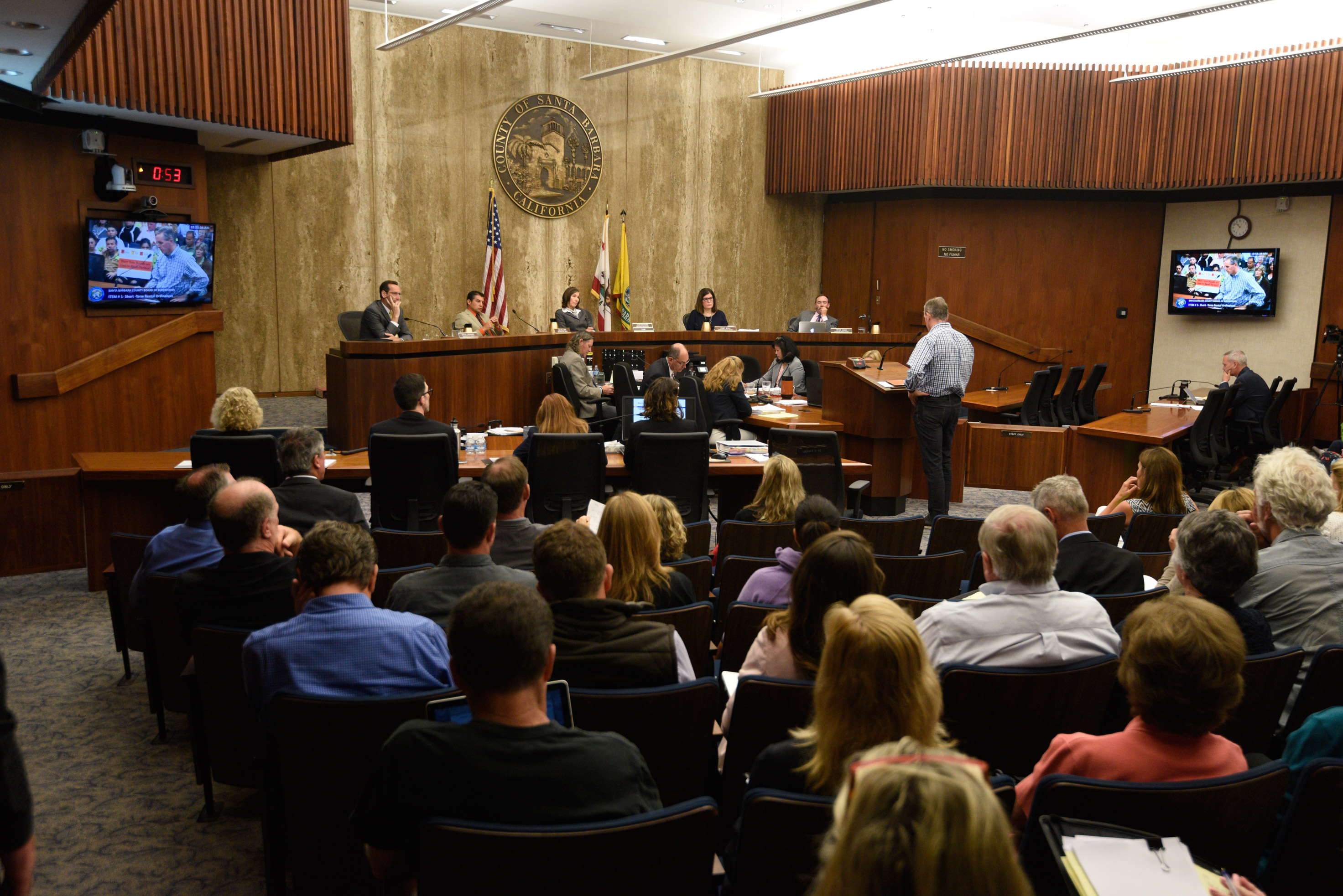Short-Term Rentals Get a No in Santa Barbara
In Split Vote, County Supervisors Ban Certain Short-Term Rentals

The two-year debate over short-term rentals across Santa Barbara County came to a head Tuesday morning inside the jam-packed County Board of Supervisors fourth-floor hearing room. Before the board was a decision that would, as chair Joan Hartmann put it, affect “very important interests at stake — people’s homes and livelihoods.”
More than 50 public speakers chimed in, both in Santa Barbara and via video link from Santa Maria, and collectively they drove home pros and cons hotly argued since the summer of 2015, when county staffers first started hosting community workshops on the impacts of short-term rentals (STRs) cropping up countywide. In addition to those workshops, the issue has been before the County Planning Commission five times and the Montecito Planning Commission twice.
On Tuesday, the scales tipped dramatically back and forth during the four-hour hearing. On one side, STR proponents hailed the extra and sometimes critical income that the service provides to homeowners and also — through collected transient-occupancy tax (TOT) — to help fill deep deficits in county coffers. Proponents also pointed out how STRs facilitate the exchange of tourist dollars for Santa Barbara goods and services, and support a sizable workforce in maintenance and bookkeeping.
On the other hand, homeowners in residential neighborhoods zoned as family-friendly enclaves away from commercial bustle complained about the steady throng of traffic and strangers that even one STR can bring to a once-quiet street. They also contended that such home-sharing steals beds from the already strip-mined long-term rental market.

In the end, by a split vote, the supervisors banned STRs in residential zones and on small agricultural parcels designated AG-I, while allowing them on large AG-II properties and in areas zoned for commercial and mixed use. However, STRs on AG-II parcels would have to conform to so-called “farm stay” stipulations, wherein vacationers interact to some degree with the hosting property’s crops and livestock. They also voted, this time unanimously, to explore revocable permits to allow homestays on residential and AG-I parcels, where a homeowner or long-term tenant lives on the host property and is present during the vacationer’s stay. Asked Supervisor Steve Lavagnino: How do you even enforce that?
Lavagnino, who voted against the ban, was also concerned with shutting off an income source as the county wrangles with a $35 million budget deficit. For fiscal year 2015-16, TOT from the county’s 535 permitted STRs brought in nearly $1.7 million, a number that could easily double or triple, proponents contended, if supervisors opted to vigorously regulate the cottage industry. Lavagnino said he felt a sting of irony — last fall he cowrote the voter-approved Measure B to increase TOT from 10 to 12 percent, yet his board was now voting to eliminate a tributary of that tax stream.
The vote’s other dissenter, Supervisor Peter Adam, charged that nothing short of building more affordable units could solve the housing crunch, but he did sympathize with those concerned about family neighborhoods impacted by temporary interlopers. “It’s a security issue,” Adam said. “Everybody wants to know who their neighbor is.”

For the three supervisors — Das Williams, Janet Wolf, and Hartmann — who voted for the residential ban, rendering 92 percent of the county’s permitted STRs illegal starting in September of next year was a matter argued on two fronts: affordable housing and neighborhood zoning. Williams said it’s not his job to facilitate out-of-towners looking to rent out their second (or third) homes here in Santa Barbara on the short term, but “it’s very much my job” to try to make sure “that people who work here can afford to live here.”
Wolf added that maintaining STRs in the South County “is a direct contradiction” to trying to maintain a balance of jobs and affordable housing. She added that for years, residents of her district hammered out the Eastern Goleta Valley Community Plan, which designates residential neighborhoods and their uses apart from business-friendly commercial zones, and to vote against that effort would be “a slap in the face.” Hartmann said that while she appreciated that some homeowners, management companies, restaurants, and the like rely on STR cash flow, “what about the integrity of our zoning and these community plans?”
While county staffers explore the homestay option, they’ve also been directed to consider areas — such as Miramar Beach — where short-term vacation rentals can possibly be grandfathered in.



